LinkedIn is revising its user interface. The modified design could impact your data if you don’t take action. But don’t worry. You can avoid trouble if you follow the instructions in this article.
Here is an official email from LinkedIn regarding the removal of the Notes and Tags features:
At LinkedIn, we’re always looking for ways to simplify and improve your experience helping you be more productive and successful. This sometimes means removing features that aren’t heavily used by most of our members to invest in others that members tell us offer greater value.
As such, we’re removing the Notes and Tags features on the LinkedIn profile, which allowed you to add notes and tags to your connections, to help manage your professional relationships. We apologize for any inconvenience this may cause you, so please know that you can download this information through March 31, 2017.
Steps you should take to back up your data
To make sure that you don’t lose any data, I recommend that you consider backing up your LinkedIn profile soon. It’s a quick process that will take you a few minutes.
What do you do?
First, save a PDF of your profile. This will save your profile content only (no photos or graphics).
Log into your account and click on “Edit Profile” under the “Profile” menu.
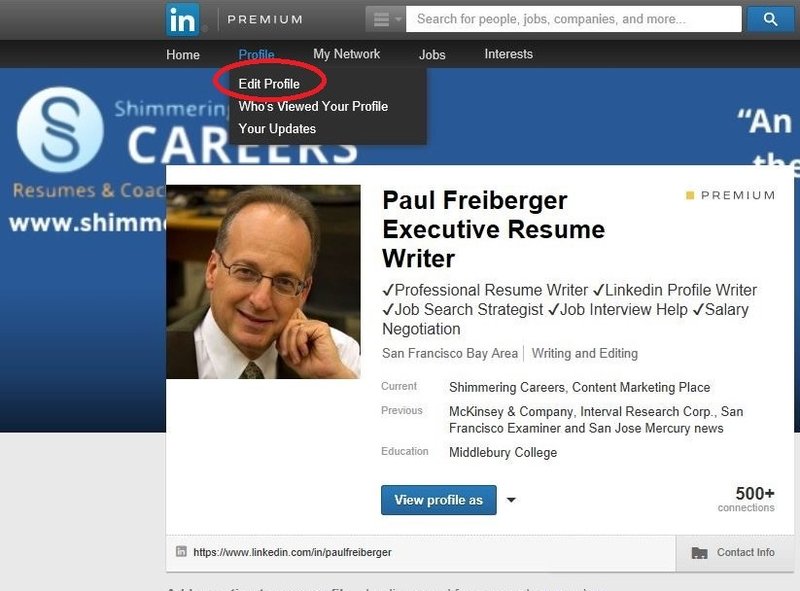
Next, click on the blue “View profile as” button and it will show the dropdown menu.
Choose “Save to PDF” and it will save a PDF of your LinkedIn profile to the default download location on your computer.
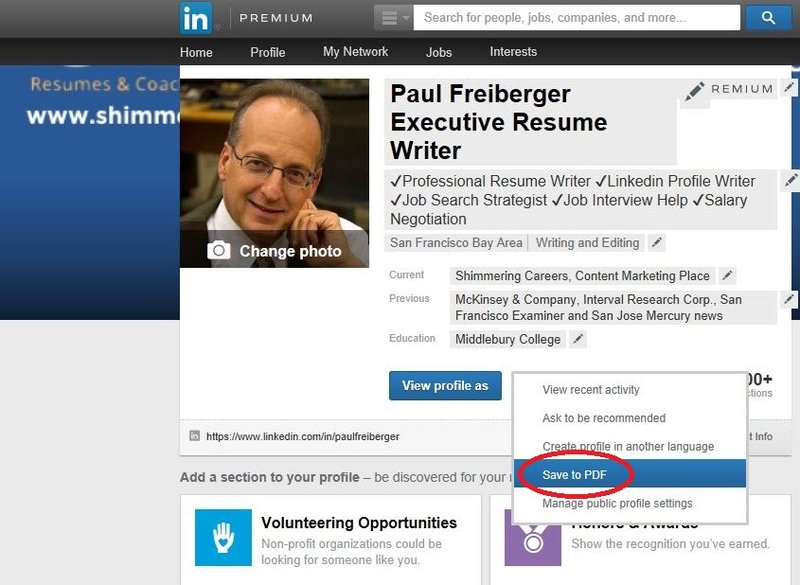
You’ll be able to open the PDF and view your content.
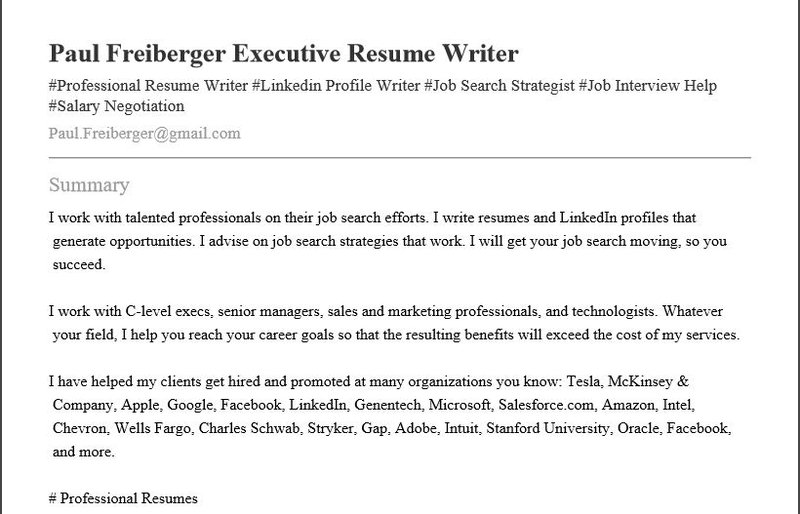
Step 2 is to archive your LinkedIn data.
This will create spreadsheet files (in .csv format) of your LinkedIn account — your connections, contacts, email inbox, positions, and profile. It will also include a “Rich Media” folder with images included on your profile.
In contrast to the PDF of your LinkedIn profile, the spreadsheet files will allow you to copy-and-paste your data into your LinkedIn profile, should you ever need to. In addition, if LinkedIn removes sections with the user interface redesign, you will be able to add this information back into your profile, if you want to.
You can find the full listing of what is included in the data archives:
https://www.linkedin.com/help/linkedin/answer/50191/accessing-your-account-data?lang=en
Here’s how to get your data archive.
Note: This feature is only available using the desktop version of LinkedIn, not the mobile app. Since your backup may contain private information, do not download your data using a public computer.
Click on your profile photo in the upper right hand corner of your LinkedIn profile. On the drop-down menu, click on the blue “Manage” button next to “Privacy & Settings.”
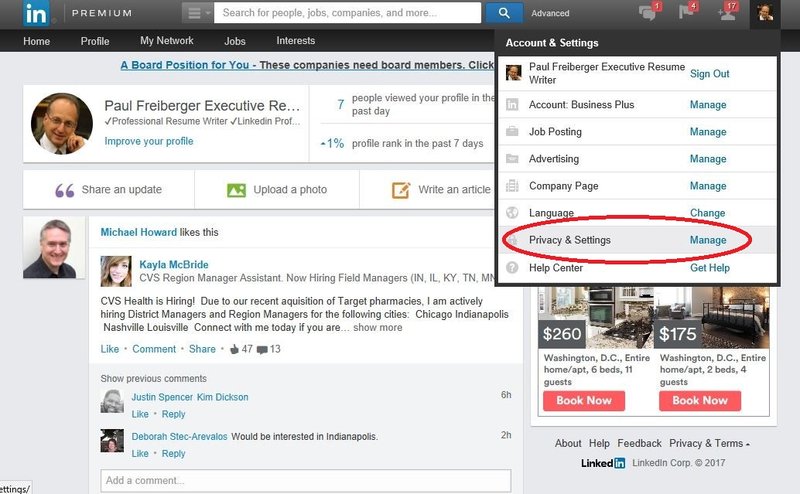
Once on the “Privacy & Settings” page, scroll down to “Getting an archive of your data.” Click on that link.
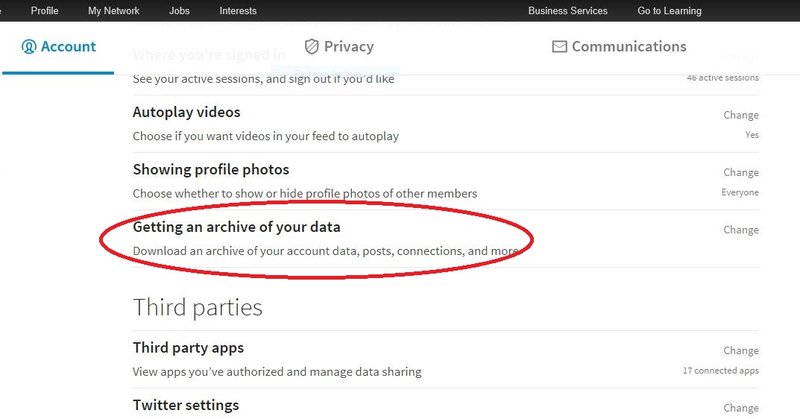
That will open a drop-down menu.
You will be able to choose whether you want a “fast file,” which includes selected information from your account or the “fast file with other data,” which includes account activity and history.
Choose the option you want and click the blue “Request archive” button.
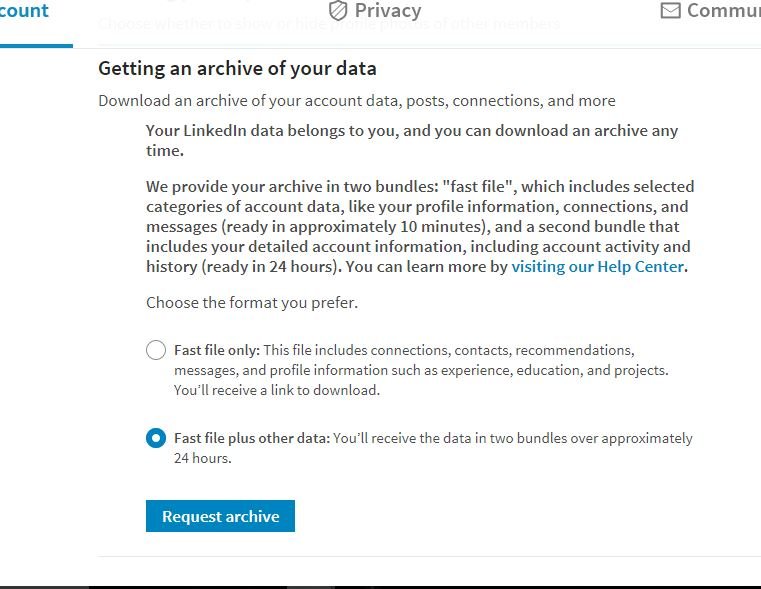
Once you’ve made your choice, you will be prompted to enter your password. Once you’ve done that, click the blue “Done” button.
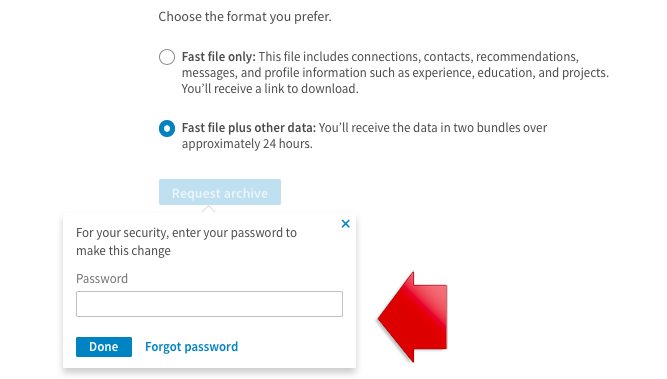
You will receive confirmation that your request has been received.

You’ll receive a notification email with a download link.
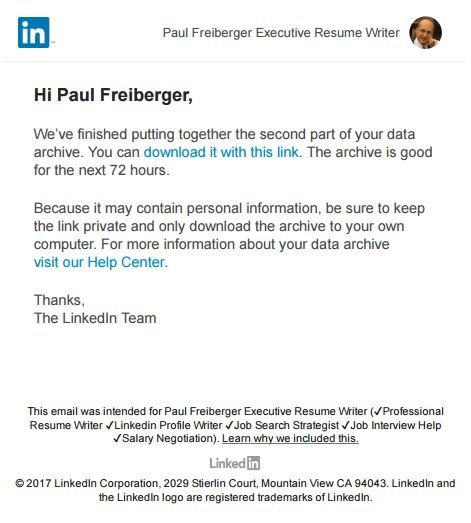
When you click the download link in your email, you will be taken back to your LinkedIn profile, where you will find a blue “Download” link. You have 72 hours to download the file. LinkedIn will send a second email when the rest of the data file is ready (within 24 hours).

Clicking the “Download” button will create a zip folder. Once you unzip it, you will see the .csv files with your connections, contacts, inbox, positions, profile, and registration information, plus a folder containing your Rich Media.

For your first-level connections, you’ll receive a file that contains First Name, Last Name, Email Address, Current Company, Current Position, and Tags.
![]()
If you get an error when trying to request your data archive, try it again using a different Internet browser, or try it again later.
If you use a premium LinkedIn Sales Navigator account, export your notes and tags to Sales Navigator. It is rumored that the notes and tags feature is going away with the user interface update.
Log into your Sales Navigator account. Move your cursor over your photo in the top right corner of the Sales Navigator home page and select “Settings.”
Under “Import LinkedIn.com,” click “Import to Sales Navigator” next to “Notes & Tags.”
Now that you understand this process, make it a habit to export your data — quarterly is probably a good idea if you don’t add a lot of new connections regularly, or more often if you do.
